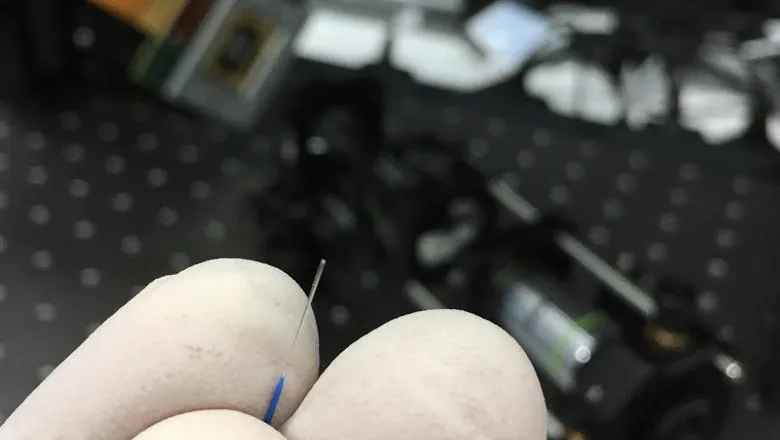21 September 2020
New fast method to enhance endoscopy and minimally invasive surgery developed by researchers
The new method has attracted significant industry interest

Researchers from the School of Biomedical Engineering & Imaging Sciences have developed a simple and high-speed method to deliver images through a multimode fibre, an optical fibre with a core diameter just a couple of times larger than that of a human hair. This method could potentially be used during surgery for biomedical endoscopy and other telecommunications applications.
A multimode fibre usually supports thousands of light propagating modes, all with different light velocities.
As a result, when projecting an image pattern into one end of a multimode fibre, a random speckle pattern is formed at the other end.
The team’s paper reports a simple and high-speed method to recover the input images from the output speckle patterns based on an emerging technology called ‘wavefront shaping’.
“Such a method could be useful for ultra-thin endoscopy and telecommunciations,” Principal Investigator Dr Wenfeng Xia said.
“This technology could enable celluar-level tissue information to be acquired at the tip of a multimode fibre for guiding minimally invasive surgery.”
Dr Xia said the fibre-based endoscopy will be much thinner than clinical endoscopes, and the spatial resolution will be much higher.
“For biomedical endoscopy, the number of modes in a multimode fibre represents the number of pixels in the images.”
“Compared to multi-core coherent fiber bundles that are commonly used in biomedical endoscopy, multimode fibres are significantly more cost-effective, and the effective pixel density in a multimode fibre can be 1-2 orders of magnitudes greater, so that finer details of tissue could be visualised.”
“For telecommunications, multimode fibres are attractive due to the potential of multiplexing data signals within the large number of modes.”
While we are still facing several engineering challenges, this technology has the potential to increase the speed and capacity in telecommunications as each mode in the multimode fibre could be used as a parallel channel to transmit data at a speed similar to that of current fibre broadband.
Mr Tianrui Zhao, a PhD student who is leading this research as his PhD project said the method uses a digital micromirror device (DMD) to modulate spatial intensity distribution of the input light of a multimodal fibre so that the light transmission properties of the multimode fibre can be characterised.
The DMD has more than 1 million tiny mirrors and each can be independently digitally flipped at two positions.
In the future, one of the research directions currently being exploited is to develop a high-resolution fibre-optic photoacoustic endoscopy probe that can provide functional and molecular information of tissue at cellular-level in real time for guiding minimally invasive surgical procedures.
